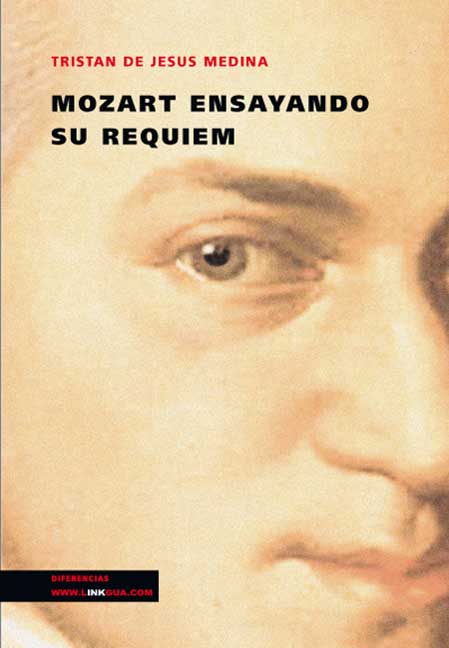3.2.2.1 Mozart rehearsing his Requiem, by Tristán de Jesús Medina (1833 – 1886)

The work “Mozart Rehearsing His Requiem,” by Tristán de Jesús Medina, was published in 1881; it does not fit into any of the literary movements prevalent in turn-of-the-century Cuba, both in terms of its subject matter and its marked mysticism. The work’s structure seems to evoke an analogy with musical creation itself, and in this sense, it is a precursor to modernism and especially to a certain area of the fiction of Alejo Carpentier, who was also a dilettante.
The text has a greater universal appeal than other pieces of Cuban literature of the period, not because it takes as its leitmotif part of the genius’s life and the ecumenical essence of music; but because of the way the characters reflect archetypal traits, while retaining a certain individuality and without the fictionalized figure of Mozart losing all contact with the real person he was.
In the prologue to his work, the author refers to a “magnetism of recurrence,” which constitutes a rhythmic-literary resource on which this affinity with the type of musical composition to which he refers is based.
The text focuses on the spiritual overcoming of pain through the creative will evident in Mozart’s life and work, an approach that combines truthfulness, idealization, and the diverse human feelings that the brilliant composer suffered or was subjected to, elevated to a high aesthetic level.
It is even possible to glimpse Mozart’s personality through the psychological profiles of the women who were part of his life; but beyond this, the author attempts to reveal something of the complex tangle of human feelings and passions, with a particular emphasis on love.
The text is heavily influenced by the best of German Romanticism, but it also hints at some modernist themes. The aforementioned mysticism is not expressed so much in the worship of divinity as through the contemplation of artistic beauty and the immersion of the subject within their own spiritual being. As in his poetic works, the hymn to death is present as the crowning glory of life and the perfection of the eternal.
The text ends with this paragraph, in which the author’s stylistic traits converge: “Tell me, divine spirit, why only you possess the secret of numbers and do not admit zero in your prodigious quantities! Tell me what is the sanctifying mystical power of your eternal numbers and your notes of eternal echoes! Your most gracious thought, messianic Apollo, Orphean Adonai, always smiling, poetic and melodic, was the one who elevated the great zero of chaos to numbers, to rules and delightful cadences. When you created the universe, you had your work celebrated in an endless concert, and you chose water and air, that tear and that sigh that never fade, for passionate tenors of the great orchestra; the gloomy and sepulchral earth for the deep bass; and the light, the laughing light and its living rays and its crazy palpitations, for childish sopranos, for trebles.” Archangels! My God and his! For your Mozart and mine, the best and most coveted of your tabernacles!… Requiem… eis…! “








